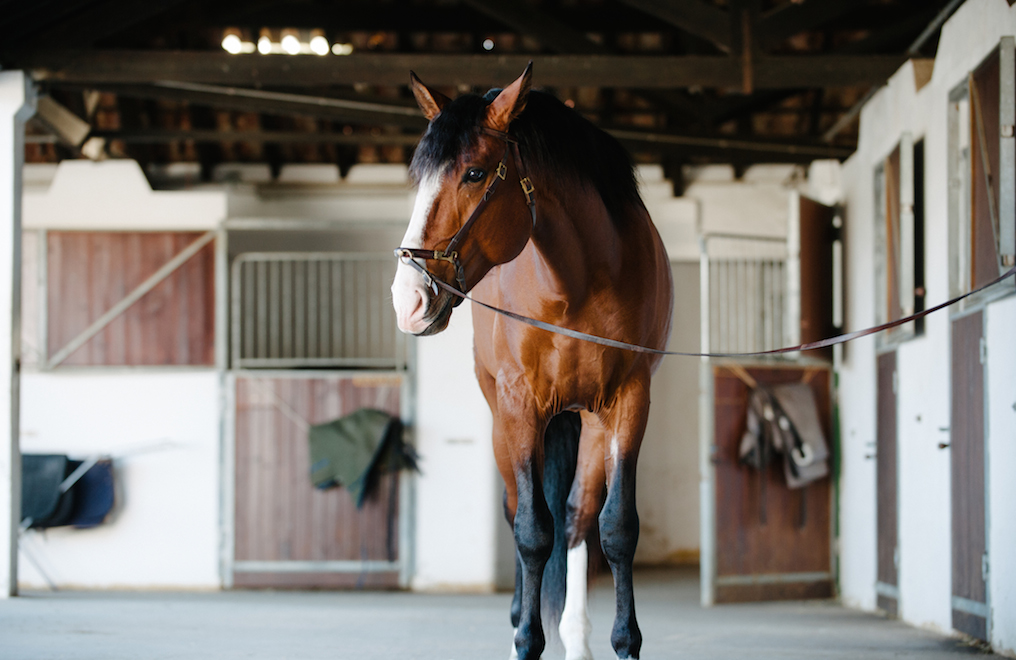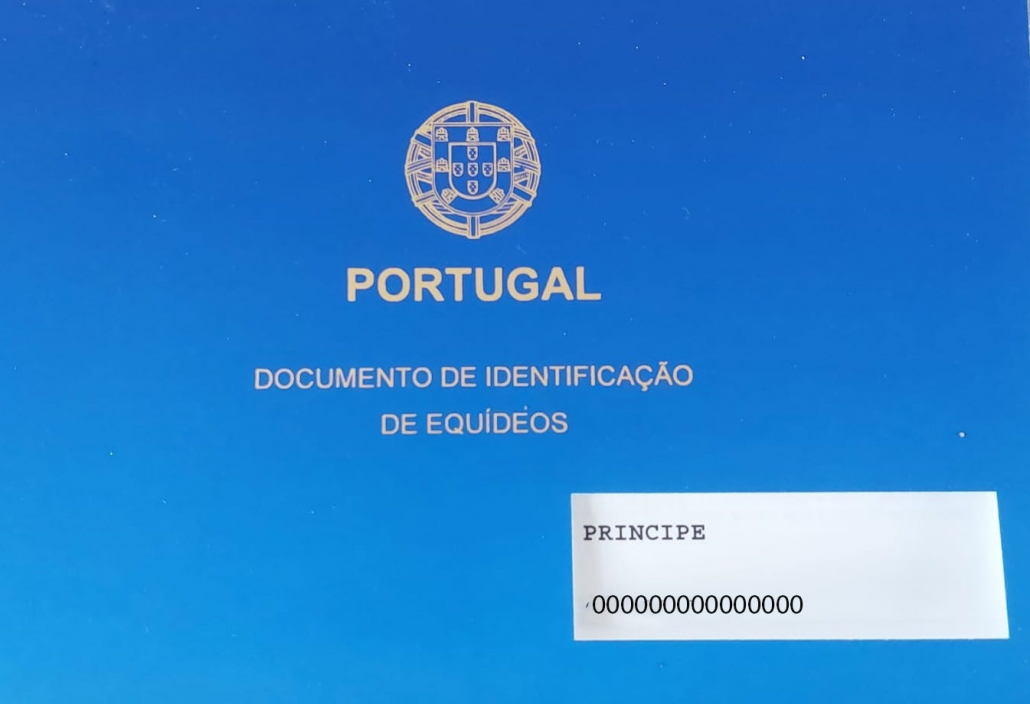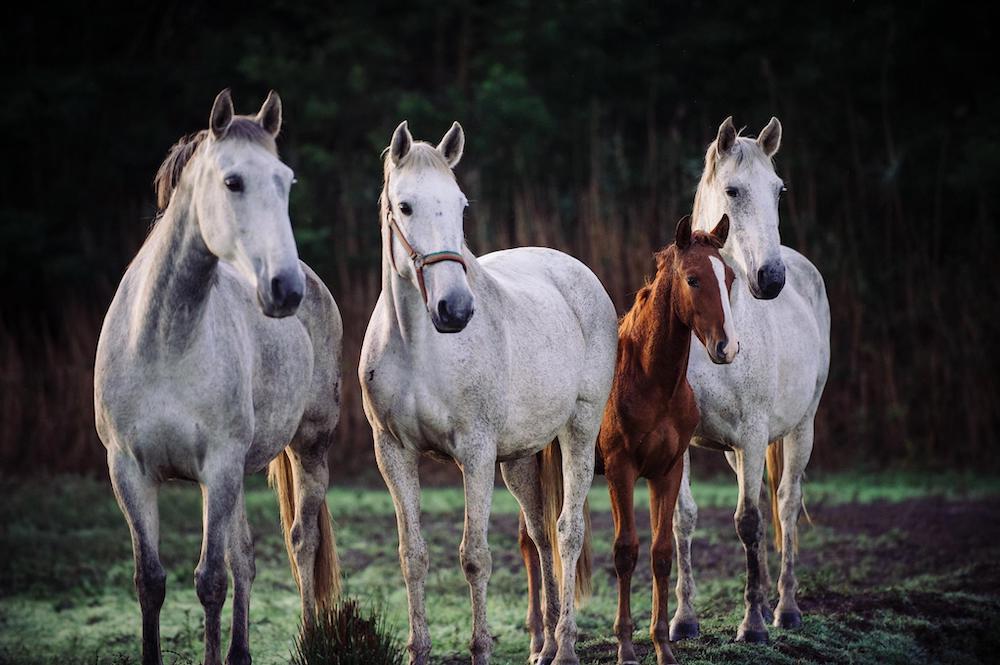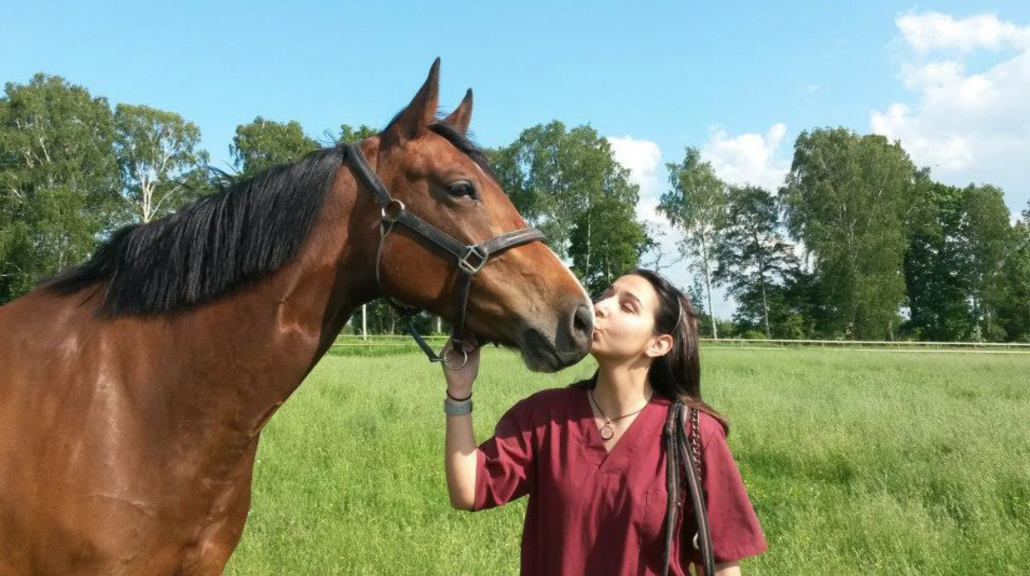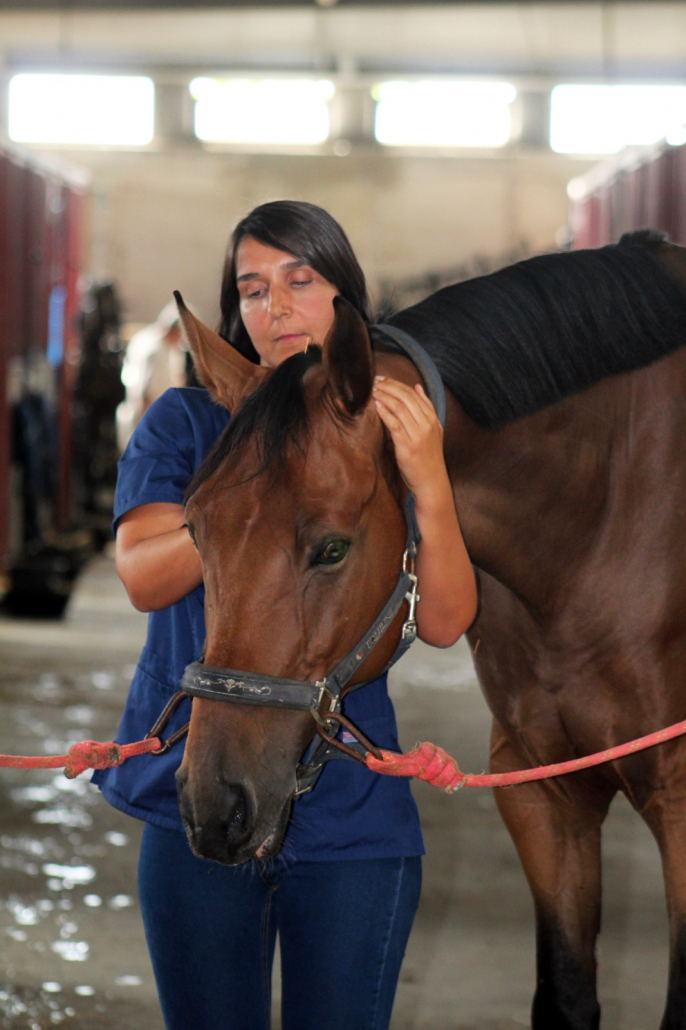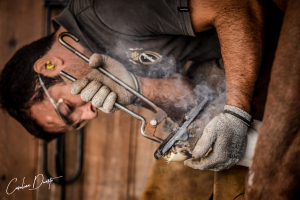Articles about shoeing, hoof care and nutrition, vet care and other services related to caring for your Lusitano in Portugal. Articles from professionals.
Get the Best from the Pre Purchase Exam
/in Articles, Farrier, Vet - Lusitano Care, advise Tips & Services, Equestrian life in Portugal, Lusitano Information, Uncategorised, Frontpage Article/by Teresa BurtonThe Pre Purchase Exam
By Teresa Burton Lusitano Heritage and Lusitano Horse Finder
Thoughts, Tips and Recommendations for the buyer and seller
It is a big step searching for and buying a horse in another country: Especially if It is your first time. The whole journey can be very emotional – right from the moment you start to recieving your perfect dancing partner at home with you.
Once you have selected a horse to make a truly informed decision you must put emotion to oneside and organise a Pre Purchase Exam PPE.
First and foremost I want to say that a pre purchase should not be viewed as a pass or fail for the horse. There are of course, some exceptions. But in most cases it is simply an assessment of whether the horse is able to do the job you want him for or not. Also that you can understand and live with any likely flaws the horse may have.
Lets face it If you carry out enough tests you will find a flaw in every horse. This is why there is an international standard set out to carry out a purchase exam – The 5 Stage Pre Purchase Exam PPE.
This PPE is simply a snapshot into the horse´s health and physical condition at the time of the exam. It is designed to provide you with a hint to the possible future of the horse but it cannot predict the future!
The PPE has come along way since the days in my childhood and teens, when we bought horses with a simple 10 minute check up to now an exam that can last several hours. There is one thing I believe is important from my past I feel is rather lost these days. This is taking the horse at face value. Now before you shout me down regailling stories of unimaginable horrors I want to say I understand. But I have seen horses with what could only be termed appalling xrays and flexions test that perform beautifully everyday with never a days lameness.
While I am certainly not in anyway a qualified veterinarian the content in this article are my reflexions based purely on many years experience. Through my work I have been directly or indirectly involved with literally hundreds of such exams. Even so it is with some trepidation I approach this sensitive subject, in the hope that I can help those buying and those selling with some recommendations and thoughts on the best way forward.
Find a Vet in another Country
When buying a horse in another country you usually have to rely on a vet located in that country to carry out the exam. The normal protocal is that this is done in conjunction with your regular vet as ultimately he or she will be the one caring for your horse. However this can become a big muddle if not conducted out with the right care and information. The vet that actually carries out the exam is the one who is in direct contact with the horse. They can make an assessment from all aspects of th encounter with the equine. Simply looking at x-rays and videos is very useful but is not the whole picture.
What´s more we have the varibility between veterarians one says no problem the other thinks otherwise. So it is vital to keep in mind the question is this horse able to do the job you intend for him. Lets face it the demands on a leisure horse are generally much lower than of a high level competition horse.
It is sensible to be prudent about who you choose to do your exam just like in any profession veta tend to specialise in different areas and can offer extra expertise on all manner of subjects from diet, to lameness, husbandary to viruses etc. There are vets that are more specialised and knowledgeable in pre purchase exams.
Check list when choosing your veterinarian
- He or she is very familar with the breed. Different breeds do come with different variabilities plus points and minus.
- They understand the riding disapline you are involved in especially if the horse for high level competition.
- They are impartial meaning they are not the sellers vet, they have not been treating the horse, they should not have any financial stake in the sale of the horse
- The veterinarian you choose works for you, is paid for by you and reports directly to you the buyer.
As the buyer you own all the rights to the information obtained this includes all findings, radiographic images, or test results. The veterinarian is under no obligation to share the exam results with the seller or agent unless given express permission by the buyer. - They speak your language or you have a mutual language you both understand
- They are experienced in PPE exams and have quality x-ray imaging equipment.
When you have your chosen veterinarian then they will give possible dates to carrry out the exam. It is helpful to provide the seller or agent with plenty of notice. These exam take some time to do and proper preparation makes a big difference –
The seller needs to have made the time available with assistance to be available. 2 to 3 people at the exam works well. Also that the they have a suitable area with flat surfaces especially for the flexion tests, lunge on hard ground.
The Exam –
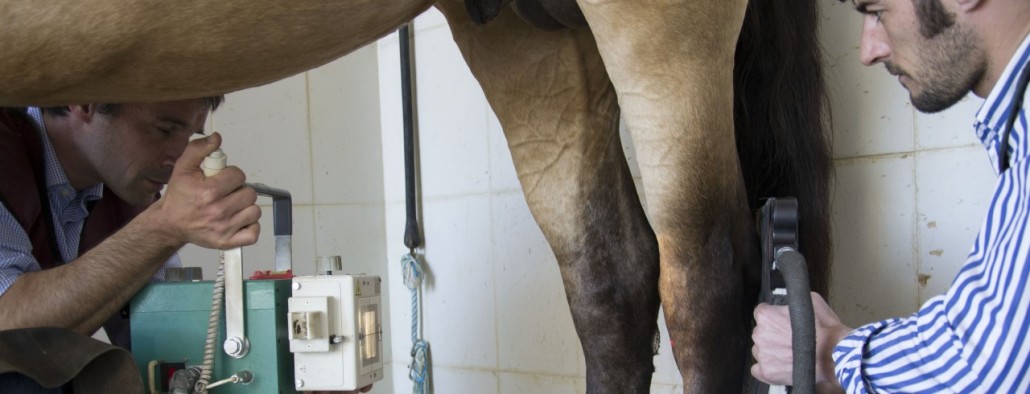
The first part of the exam is the physical where the vet assesses the general health of the horse – weight, coat condition, eyes, teeth the oral cavity for tooth abnormalities, Listen to the heart carefully from both sides of the horse to detect subtle murmurs or arrhythmias, breathing, character, and visable imperfections on the body and legs likes signs of injury or surgrery, medical history and performance history.
The blue book checked with the and the micro chip number confirmed. UNDERSTAND THE BLUE BOOK
Hooves checked for any signs of lameness – they are examined carefully for integrity and balance and use hoof testers to identify any soreness in the soles
- Then movement that includes – flexion tests on all 4 legs – have someone available to take video.
Working on the lunge both reins all 3 gaits on soft ground
Working on lunge on hard ground walk and trot
Turning on the forehand on both sides to see the crossover of hind legs to perform the lateral
movement. Then asking the horse to back up.
All of this part of the exam is noted by the veterinarian and will be presented in a written exam sheet to you along with videos of flexions and lunge work.
Assuming the horse is seen as healthy after this stage, then the veterinarian will move onto x-rays. A regular exam includes 16-18 xrays. Good quality clear xrays are very important and taken form the correct angles and alignments. They can easily be misread with poor quality and angles. This is an important reason to ensure that you appoint an experience veterinarian in ths field.
You can ask for other x rays that are not included in the standard pre purchase exam. There is generally a charge per extra xray say for instance the back and neck. You could for example have up 36 xrays.
If there is a question mark on an x-ray sometimes it is worth having others taken at different angles to gain a more 3 dimensional view of the area. Ultrasound exams can also be used on areas with abnormalities. It is very useful to your veterarian that you are easily available when the exam is taking place. This way your veterinarian can contact you to ask if he or she can take further views or use ultrasound.
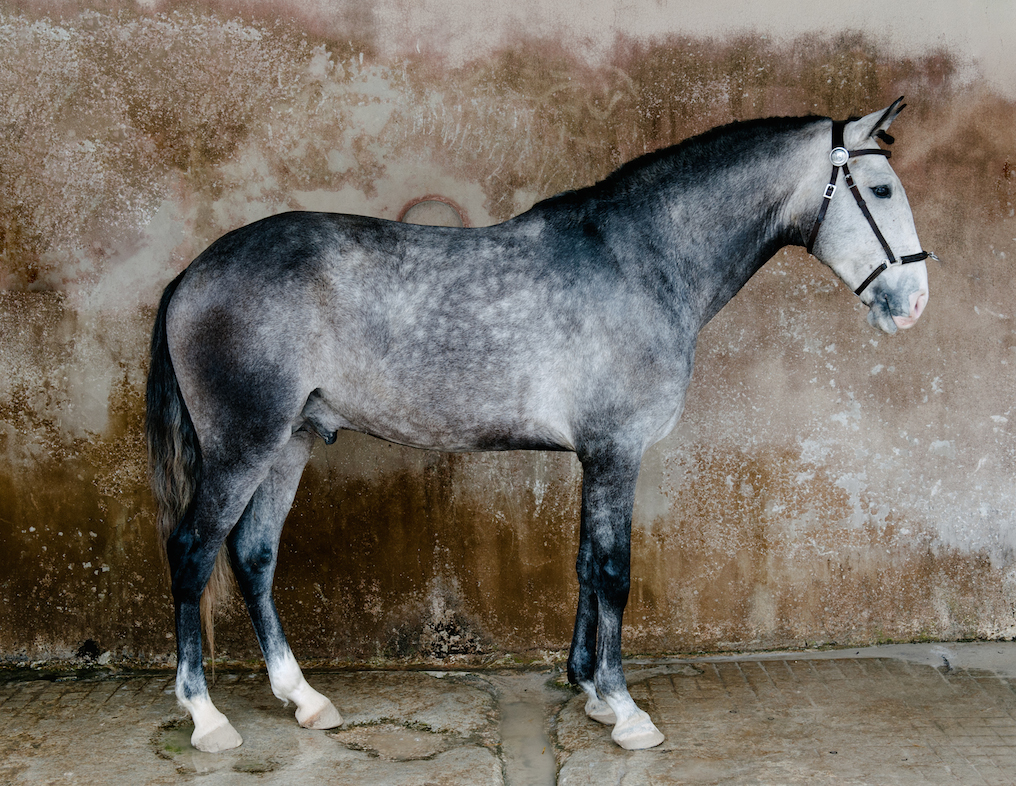
Blood Tests
If you are in a country that does not allow horses in with a posiive piroplasmosis test. Part of your exam will need to include a blood test at Bose in Germany for Piro Learn More about this here.
You maybe wise to do the piroplasmosis test in Bose prior to the PPE
You will also need proof of a negative Coggins test before importing. This is only required for breeding horses. Geldings are excempt
You can request A complete blood count and serum chemistry to give some indication of the horse’s overall health.
You can also test for drug use
This of course depends on your budget you can simply go with the 5 stage pre puchase and only do other tests should your veterinarian have a concern or consider it is helpful. If you are insuring your horse the insurance companies generally only require the standard test.
- Coming Soon Extra requirement for Breeding Animals
If you are purchasing animals for breeding purposes there are special things to consider and is a good idea to talk with your vet carrying out the pre purchase as they may need to call on the asistance of a vet specialising the breeding.
Breeding Mares – They need to be checked out for soundness for breeding.
Tips for the Seller
When you have decided to sell your horse it is a good idea to carry out your own pre purchase exam even if it is simply the physical part. This way you have a clear picture of where you stand and what to expect. It is by far better to be open with prospective buyers, open about the horse´s medical history and character let the buyer know about behaviour problems etc – flaws in your horse does not mean no buyer will not come.
Say for instance something comes up in the flexions or on the lunge your horse is not moving level behind, often it is something you can address. Simple things like –
- Poor fitting saddle
Riding style
Teeth needing attention
The bit
Laying down on hard ground or getting cast in the stable
Unexpected traumas in the field or while ridden for like bad footing after a jump etc.
An investment in a equine osteopath or equine Chiropractic can help hugely in maintaining your horse´s well being. A qualified equine practioner can detect and remedy previously unrecognised areas of restricted movement. They can free up tight areas in the body to enable your horse to move more freely and identify why the problem is occuring.
It is a small investment compared to dissapointments when a horse purchase fails based on something that could have been easily solved.
Keep the dentist visits up to date and recorded along with flu vaccinations and worming.
Don´t be tempted to make big changes right before the Pre Purchase for instance having the horse shod. Sensitivity after shoeing often occurs and can mean your horse shows unsound when in fact it is simply the result of new shoeing.
Be open about any medication the horse is recieving or any interventions in joints etc.
On the day of the exam have two people available to assist the veterinarian and suitable space to carried out the walk and trot ups in straight lines and flexions. Plus an arena for the lunge work. A quiet environment for the Xrays and available power.
If it is a very young horse it really pays dividends if you put in the time to prepare the horse with handling, picking up his feet trotting in hand and standing calmly. This also makes it safer for the vet to do his job.
Once you have conpleted the exams and are eady to complete the purchase the next stage is –
- The Buying Contract
- Payment
- The ownership transfer – This is done with your country association or your country does not have an association then contact the APSL in Portugal.
- Booking the transport or moving to a trainer
We wish you the very best in your journey and any help we can give please contact us for horse suggestions, vet etc email Us
LINKS
See list of vetenarians in Portugal
Transport, Understanding Piroplasmosis, The blue book,
Text by Teresa Burton
How to Identify a Lusitano is Pure Bred
/in Blog, Articles, Farrier, Vet - Lusitano Care, advise Tips & Services, Lusitano Information, Uncategorised, Frontpage Article/by Teresa BurtonHow do you know a Lusitano is pure bred?
Many have made the mistake of assuming the Blue Book defines a Lusitano as a pure bred horse. But this is simply not the case at all. When you are looking to buy a Lusitano horse or start breeding project it is important to understand how the breed is registered and approved.
It is the registration and approval and not the blue book that denotes a pure bred Lusitano horse
THE BLUE BOOK
The purpose of this book is to act as –
- A passport for travel nationally and internationally.
- A way to identify the horse.
- To keep a record of the required vaccinations.
- The book must be with the horse at all times.
A cross bred Lusitano can have a blue book and in fact to be exported they have to have one. In Portugal many cross bred Lusitanos have a green book as it is cheaper and quicker to get. However should the owner wish to sell their horse to a buyer outside of the country a blue book must be obtained. To do this a vet needs to visit in order to registered the horse´s chip number, note distinguishing features etc.
The signed paperwork with proof of ownership etc and the payment is submitted to the APSL to issue the blue book. If you are waiting to export your Lusitano sometimes it is possible to pay an extra fee to express this service.
- Note all vaccines must be update in the blue book for travel.
Registering and Approving a Lusitano
A Lusitano is only classed as a Pure Bred Lusitano if it is registered with the APSL in the adult studbook. Both the parents have to be approved for breeding and registered. However a Lusitano can be registered in the studbook and not approved for breeding.
Note : A foal born, from un-approved and or unregistered parents, will not be accepted. If the parents are registered, but not yet approved after the foal is born, they have a certain amount of time to approve the parents.Should they fail their approval, the foal will not be classed as a purebred but instead as a cross bred.
Blood and DNA
The parents of the horse have to be blood tested and/or have DNA taken, this is done at an approval or when the horse is registered. This ensures all offspring have proof of their parentage. Usually the blood is taken from the foals in the first year to identify them and their parents.
To look up a Lusitano and check he/she is registered as pure bred and is approved for breeding you need to have the following information
- The full name of the horse
- The name of the breeder
- NIN/Chip/UELN
One or all of these will ensure that you can search in the Public access to the Stud Book on the APSL website (https://www.cavalo-lusitano.com/en)
If the horse is registered they will be shown here will their details, date of birth, colour, breeder, owner and bloodlines.
Understanding what defines a cross bred Lusitano
A cross-bred Lusitano can have a couple of meaning –
- It is actually a Lusitano cross with another breed. There is now a new class of Lusitano which is a ´Luso Warmblood’ (Sport Lusitano) and this is a Lusitano crossed with another sport breed such as a warmblood.
- It is a Lusitano but one or both of the parents were never approved for breeding. This can happen if one dies before getting to be approved or the owner simply never took the horse for approval or they did and the horse failed to reach the grades required.
- If the Lusitano has never been registered
When you are buying a Lusitano you can easily check the registration online. The seller and or agent should provide you with all the details you need to check for yourself. If this is not forthcoming then we recommend you look elsewhere for a horse.
CBD oil for horses: what do you need to know
/in Blog, Articles, Farrier, Vet - Lusitano Care, advise Tips & Services, Lusitano Information, Frontpage Article/by Teresa BurtonCBD for Horses by Cecilia Leal
Nowadays, products based on Cannabis plant are becoming a popular trend, especially for human medical use. However, what do we know about its use in pets, more specifically, in horses?
The first thing to note on this subject is that there is common misunderstanding between the terms cannabis, marijuana, hemp, CBD and THC, as well as an erroneous perception that CBD oil contains the
(tetra-hydro-cannabinol). Let us start by clarifying thepreviously mentioned terms.
The Plant
Cannabis is an Asian herb of the family Cannabaceae, which comprises two different species: Cannabis sativa and Cannabis indica. Although there are similarities between the two, there are also important differences: Cannabis sativa belongs to the hemp family and has tough fibrous, tall and loose branches, and Cannabis indica is a low-growing densely branched species. Unfortunately, the term is used interchangeably in popular culture with marijuana although strains of cannabis can be either marijuana or hemp depending on their concentration of THC.
Hemp (Cannabis sativa) is legally defined (in the USA and the EU) as any part of the cannabis plant that contains less than or equal to 0.3% THC. Hemp has traditionally been farmed for industrial uses (e.g., textiles, paper, biodiesel, construction materials), as well as for food (hemp seeds and hemp seed oil).
The term Marijuana is typically used for the psychoactive dried resinous flower buds and leaves of the cannabis plant (Cannabis sativa or indica) but can refer to any part of the cannabis plant that contains more than 0.3% of THC (De Briyne et al., 2021).
CBD & THC applications
The Cannabis plant contains hundreds of different active compounds, which have either psychoactive or non-psychoactive effects. The two main components are are THC (tetra-hydro-cannabidiol) and CBD (cannabidiol). THC is a psychoactive component of the cannabis plant that is linked to the ìnebriated` state.
CBD, on the other hand, has been investigated for many conditions, most notably epilepsy, but also including, anxiety, mental health conditions such as schizophrenia, appetite improvement, nausea relief, sleeping disorders, elevated intraocular pressure, pain related to chemotherapy treatments, and multiple sclerosis-related spasticity.
THC is psychotropic in humans and dogs, which have a high number of cannabinoid1 receptors in their brains. CBD, on the other hand, has no psychotropic effects and is particularly effective at low doses.
Studies of CBD effects on horses
In horses, CBD products have shown promise for treatment of hyperaesthesia (Ellis & Contino, 2019), osteoarthritis pain (Sanchez-Aparicio et al., 2019), anti-inflammatory effect in chronic inflammation (Turner et al., 2021), visceral pain, inflammatory processes and changes in intestinal motility in horses (Galiazzoa et al., 2021). Although available objective data regarding therapeutic dosage is still scarce, different dosages have been studied and did not cause adverse effects, like incoordination or sedation, and was overall well tolerated (Yocom et al.; Blanc et al.; Williams et al., 2022).
A study made by Ellis and Contino (2019) reported improvements in a horse with severe pain sensitivity when administered 500 mg CBD per day. Another study reported lower reactivity (spookability) after 6 weeks of supplementing with 100 mg of CBD every day (Draeger et al., 2021). In addition, according to Turner et al. (2021), CBD was responsible for decreased inflammatory cytokines (proteins associated with pain and inflammation), in a study conducted in vitro.
Galiazzoa et al. (2021) performed a study in order to identify the distribution of different cannabinoid receptors in the equine intestine. These findings support CBD use against visceral pain, inflammatory processes and changes in intestinal motility in horses. Therefore, it could have interesting applications in cases of colic, inflammatory bowel disease and intestinal hipomotility after colic surgery.
Is CBD safe to use?
Williams et al. (2022) conducted pharmacokinetics studies looking at the absorption and clearance of CBD. A dose of 175 mg and 1000 mg was given to 500 kg/1100 lb horses, orally, once per day for 7 days. There was no incidence of diarrhea or loose stool, decreased appetite or somnolence recorded.
However, it is important to note that despite the relatively high dose (1000 mg daily) plasma concentrations were below the effective concentrations reported by Turner (2021). Therefore, a horse might need significantly higher oral doses of CBD for any effectiveness against pain and inflammation.
In another study conducted by Yocom et al. (2022), CBD was reliably detected in synovial fluid at 1500 mg single dose. Because cannabinoid receptors have been identified in osteoarthritic joints in humans and dogs it explains the pain modulation mechanism of osteoarthritic pain, in this study mild hypocalcemia was seen in all horses and elevated liver enzymes were observed in 8/12 horses, but these changes improved or normalized within 10 days after the final CBD dose. Some horses presented soft-form manure for a few days and 10/12 gained weight. All horses maintained normal physical examination parameters, attitude, and appetite throughout the duration of the study. No behavioral changes, including sedative-effects, were observed.
Most CBD studies performed on horses are very recent (the latest one dates of 2019) and additional studies are required to investigate the efficacy in treating specific conditions and to establish therapeutic doses.
What is the status of CBD oil use on competition horses?
According to FEI’s regulations, all natural and synthetic cannabinoids containing THC are banned substances, meaning they are not permitted for use on the competition horse at any time. However, cannabidiol (CBD/CBDA) is under controlled substances. According to FEI, controlled medication aresubstances that are deemed by the FEI to have therapeutic value and/or be commonly used in equine medicine. They have the potential to affect performance and/or be a welfare risk to the horse. This means that although your horse may be administered CBD, you cannot compete while it is present in your horse’s organism.
Previous research has indicated that CBD can be detected in urine for up to 72 hours following a single dose. It should also be noted that, despite the considerably low quantity of THC present in CBD products,THC can be present for up to 24 hours post administration in plasma samples (Williams et al., 2022).
Equine Vet Located in Ericeira Portugel (close to Lisbon) Contact – 00 351 915 010 360
Email – ceciliarodrigoleal@gmail.com Facebook Page Equi24
OTHER ARTICLES – Feeding Lusitanos, Shoeing, Piroplasmosis
Sources
Blanc M. P. St. , Chapman A. M., Keowen M. L., et al., Effects of a Supplement Containing Cannabidiol
(CBD) on Sedation and Ataxia Scores and Health, Journal of Equine Veterinary Science,
10.1016/j.jevs.2022.104085, 117, (104085), (2022).
De Briyne, N.; Holmes, D.; Sandler, I., et al. Cannabidiol Oils and Tetrahydrocannabinol—What Do Veterinarians Need to Know? Animals 2021, 11, 892. https://doi.org/10.3390/ ani11030892.
Draeger A. L., Thomas E. P., Jones K. A., et al., The effects of pelleted cannabidiol supplementation on heart rate and reaction scores in horses. Journal of Veterinary Behavior, 2021, Vol 46, 97-100.
Ellis K, Contino E. Treatment using cannabidiol in a horse with mechanical allodynia. Equine Vet Educ 2019; 33:e79–82.
Galiazzoa G., Tagliaviaa C., Giancolaa F., et al., Localisation of Cannabinoid and Cannabinoid-Related Receptors in the Horse Ileum. Journal of Equine Veterinary Science, 2021, Vol 104, 103688.
Sanchez-Aparicio P., Floran B., Velazquez D. R., et al., Cannabinoids CB2 Receptors, One New Promising Drug Target for Chronic and Degenerative Pain Conditions in Equine Veterinary Patients, Journal of Equine Veterinary Science, 2020, Vol 85, 102880.
Turner S, Barker VD, Adams AA. Effects of cannabidiol on the in vitro lymphocyte pro-inflammatory cytokine production of senior horses. J Equine Vet Sci 2021;103:668.
Williams M.R., Holbrook T.C., Maxwell L., et al. Pharmacokinetic evaluation of a cannabidiol supplement for horses. J Equine Vet Sci 2022; 103842.
Yocom A. F., O’Fallon E. S., Gustafson D.L., Contino E. Pharmacokinetics, Safety, and Synovial Fluid Concentrations of Singleand Multiple-Dose Oral Administration of 1 and 3 mg/kg Cannabidiol in Horses. J Equine Vet Sci 2022, 113, 103933.
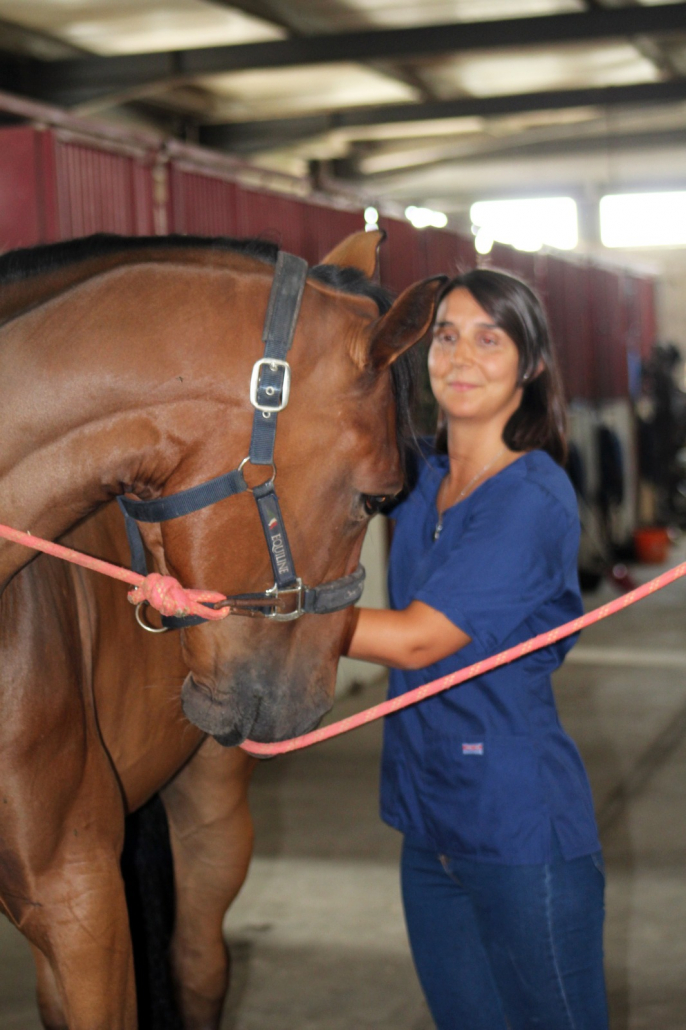
The Procession Caterpillar
/in Blog, Articles, Farrier, Vet - Lusitano Care, advise Tips & Services, Equestrian life in Portugal, Uncategorised, Frontpage Article/by Teresa BurtonThe joy of Riding Your Horse Out
/in Farrier, Vet - Lusitano Care, advise Tips & Services, Equestrian Holiday Locations, Blog, Articles, Portuguese Equestrian Heritage, Classical Equitation, Uncategorised, Frontpage Article/by Teresa BurtonNatural Solution to Reduce Piroplasmosis!
/in Farrier, Vet - Lusitano Care, advise Tips & Services, Uncategorised, Frontpage Article, News/by Teresa BurtonPortugal´s 1st European Certified EuroFarrier
/in Blog, Articles, Farrier, Vet - Lusitano Care, advise Tips & Services, Frontpage Article, News/by Teresa Burton
Image – Nuno Bernardes
First Farrier in Portugal with the European Certified EuroFarrier Qualification
This qualificated is issued by the European Federation of Farriers Association.
There is an old saying among horsemen, “No foot, No horse.” Despite their size and strength, horses are notoriously fragile animals. Four slender legs and small hooves must bear the horse’s full weight of 400 to 650 kilos.
Therefore hoof care is a vitally important issue for all horse owners. It is true that a horse may be able to sustain injury or illness in many parts of its body, the hoof bears weight and so adds hundreds of kilos of stress to any ailment. Maintaining a healthy hoof is the best way to give your horses a good chance to have a long, healthy lives. And that is only possible by having the best, and better educated, professionals at your service.
Developing a Passion for Hoof Care
After many years as an Equine Veterinarian, Nuno Bernardes found one area of equine medicine that shortly became his passion and his medical focus: Podiatry. One of the gaps he also found in his education was precisely hoof care and hoof therapeutics. And not only he decided to put his focus on improving his theoretical background on hoof and its conditions, but he also found the need to put his hands directly at the trade. Not having a true education reference in any institution in Portugal, he decided to engage in an Emergency Farrier Course in Spain that allowed him to get the basic skills to add to his already strong theoretical knowledge.

Following the premise that more qualification comes through education, in February this year Nuno Bernardes achieved a mile stone for Portuguese farriers by receiving the EFFA -Certified Eurofarrier Qualification. He has become the first farrier in Portugal to achieve this level of expertise. This certification recognizes the knowledge and skills to be able to perform legally the farrier trade in almost every country in Europe. Judge by recognized specialists through a very demanding and detailed examination, Nuno was able to pass this exam and get his recognition.
EFFA
EFFA -The European Federation of Farriers Associations develops a common basic standard of competence in farriery. The Mission of the European Federation of Farriers Associations is to improve the welfare of the horse by encouraging the highest standards of trimming and shoeing.
Nuno has been our farrier for a number of years and I have always been struck by how much knowledge and active interest he has in the subject . He is continuously committed to advancing his learning by regularly travelling to other countries for clinics and courses. With Nuno we have the added advantage that he is also a practising vet so he brings his veterinary knowledge to his work. His efforts have paid off and I think this will encourage many more farriers aim for the same level of excellence.
Sharing Knowledge to Bring the Standards in Portugal
Being very found of sharing his knowledge with veterinary students that he tutors, and other farriers, he is always available to lecture at the universities and in farrier meetings. One of his goals his to increase the level of the farrier trade in Portugal through a formal education program for starting farriers but also organizing Continuous Professional Development courses for already stablished farriers. Following this objective, Nuno also had a very important role in promoting the constitution of the Portuguese Farriers Association, from which he is also a board member.
The Art of a Good Farrier
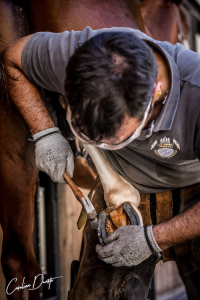
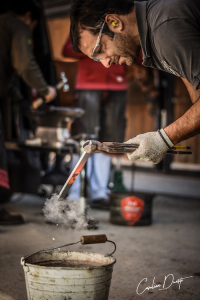 Thoroughout his daily work he deals with a lot of therapeutical cases, working in strong connection with some veterinarians and hospitals, but he also shoes horses that don’t have any particular problem but that do have owners that demand for a very knowledgeable professional.
Thoroughout his daily work he deals with a lot of therapeutical cases, working in strong connection with some veterinarians and hospitals, but he also shoes horses that don’t have any particular problem but that do have owners that demand for a very knowledgeable professional.
Our Experience with Nuno´s Work
Having owned horse most my life and now been in Portugal many years owning and selling horses I have seen the results of a huge amount of pre purchase examinations. I think it gives me small position to comment on the importance of good hoof care. I can honestly say that I have witnessed an improvement in the quality of farrier work but it has saddened many times when a lovely horse has been failed due to neglect in this area. I cannot stress enough how important it is to be rigorous when you own horses about hoof care and shoeing.
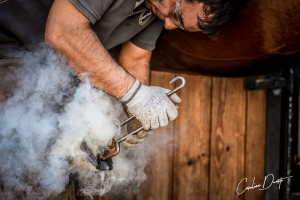
So how do we maintain a healthy hoof?
Just like our own health it is better to commit to overall wellbeing as a health benchmark. Not waiting for problems to take action. If the diet is right, the hooves are regularly checked even for breeding stock and good shoeing you are well on the way. Horses in work should have their hooves picked out daily before and after work. The aim of picking out the hooves is to keep out rocks, clean out damp bedding and mud to avoid thrush. Just like our fingernails, horse’s hooves grow continuously and need to be trimmed every five to six weeks to keep them in proper shape.
A Trained Farrier should do the Trimming.
Inexperienced horse owners can easily trim the hoof unproperly, leading to infection or discomfort. The hooves must also be balanced to the horse’s natural way this is done by seeing the horse moving and the wear of the shoe and hoof. If this is not done correctly the horse can end up uneven in their gait or worse physically disabled. Not every horse will require shoeing, but if your horses are doing a lot of hard work or working on hard surfaces, they will probably need to be shod. And if he is unbalanced or in need of therapeutic shoeing it will most certainly do.

Dangers of Not Maining Good Hoof Care Practise
There are a number of other problems that can occur If a hoof is not maintained well, problems such as thrush, canker, bruised sole, abscesses, and cracks in the hoof wall. Thrush is a sign of infection. You will recognise this by the malodourous discharge from the frog of the horse. To avoid this keep your horse out of constant wet, and dirty conditions. Bruised soles often occur after a poor shoeing job or if shoes are left on too long. Abscesses can be a horse’s nightmare. If an abscess develops, more than likely your horse will suddenly be impaired on one foot. They are caused by puncture wounds, or by bruising, but long and neglected hooves suffer the most. To solve this, you will need to see a veterinarian, have the abscess drained, poultice and assure that he has his tetanus vaccination updated. Cracks are important to avoid because they can also lead to infection and severe lameness. The easiest way to avoid cracks is to have a professional trim the hoof. Usually cracks develop from unbalanced hooves and wrong weight bearing distribution. Those pressures can affect the coronary band, where the hoof grows from, leading to the deep cracks that are quite hard and time consuming to manage.
Other conditions to be aware of are
There are other conditions too such as white line disease. The white line is the area (that looks whitish but more often is yellow) between the outside hoof wall and where it meets the sole. When this becomes damaged, it allows fungus and/or bacteria to invade and separate the layers of the hoof wall. If this happens, the infection can spread around the hoof and up the inside of the wall to gradually “eat away” at the hoof. It usually don’t cause lameness but its progression can go as high as the coronary band. At this stage it can compromise severely the suspension of the third phalanx within the hoof, leading to severe signs pretty similar to those of a laminitis.
A quality balanced diet is paramount for healthy hooves.
A quality balanced diet is paramount for healthy hooves. Horses that are obese or severely malnourished will eventually develop problems in the hooves. Horses’ hooves are made up of protein and keratin (the same stuff that makes up hair). Like a horse’s hair coat, hooves will grow faster when days are longer. And while hooves may be slower than your horse’s hair coat to tell you that your horse’s overall health is suffering, sooner or later you’ll see poor nutrition reflected in cracks, chips or uneven hoof growth. It may be a subtle (and slow-moving) nutrition report, but your horse’s hooves are doing their best to say “pay attention!” And never forget water!!!
Check the articles on feeding Lusitanos – knowing their history and early lifestyle helps hugely in understanding the right diet for them.
The Risks
An obese horse may be at risk for laminitis due to a metabolic condition known as Equine Metabolic Syndrome. Laminitis occurs when the delicate folds of tissue in the hoof (laminae) that produce the hard substance of the hoof wall and keep the hoof wall attached to the underlying bone, become inflamed or damaged. Left unattended, laminitis can lead to founder,a chronic condition in which a horse’s coffin bone rotates or sinks. Learn to be aware of the nutritional aspects of the feeds you choose especially the levels of sugar which is not suitable for horses in large amounts. In our management we prefer to keep sugar entirely out of our horses´ diet.
The benefits of plenty of movement is vital and when possible horses are better in overall well being when they can live some of their time outside in paddocks. Movement stimulates the blood flow to the hoof keeping them flexible and energised.
These are just tips about horse care and a few problems that could occur if you do not understand the importance of a healthy hoof. Just remember the old saying –
`No foot, no horse.’ A horse is only as strong as the feet it stands on.
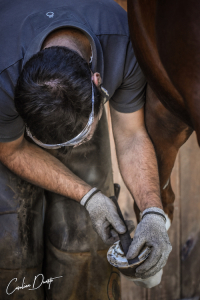 A big thank you to Nuno for his outstanding work and well deserved achievements it is another step for Portuguese Equestrian Culture and providing high quality service.
A big thank you to Nuno for his outstanding work and well deserved achievements it is another step for Portuguese Equestrian Culture and providing high quality service.
Text – Teresa Burton
Images Carolina Duarte Photography
You can contact Nuno Bernardes email nbluso@cvetequinos.com
Horse Insurance in Portugal
/in Farrier, Vet - Lusitano Care, advise Tips & Services, Frontpage Article, News/by StewartAt Lusitano Horse Finder we are always looking to improve our service and provide you with extra ´peace of mind´recently we have been exploring different Insurance options for your Lusitano in Portugal in addition other services that can give you added value and finger tip information all stored in one pass coded secure personalised location online.
INSURANCE POLICES
When you are buying a horse in another country and then leaving him there for training it is only natural that you would have concerns. Wondering how he is, is he happy, working well and if something happens can he be covered by insurance. Unfortunately there are very few professional organisations that offer good quality insurance plans at competitive prices for horses in Portugal. After much research we are happy to say we have formed a union with a company that provides exactly what you need for ´peace of mind´ comprehensive service.
Worldwide Leader
They are a worldwide leader for sport horse Insurance, and approved cover holder at Lloyd’s of London.
They have been insuring horses all around the world for more than 30 years, and also have their own international breeding and showjumping competition stable.
Since they are in the horse field it has definitively helped them to fulfil the expectations of us horse owners, breeders and riders. We believe they provide the best insurance coverage on the market. All the time your horse in away in another country and even back at your home your horse can be completely covered.
If you would like to know more and see some sample policies and quotes please do get in touch it is a ´no commitment´ contact. Feel free to Email Teresa.

FINGER TIP INFORMATION ONLINE
In addition we offer another very modern services for your horses in training. It is an online, password protected ´Lusitano Management Profile Service´. This product is designed to give you immediate online access to your horse´s information which is updated monthly.
Online Profiles
The profiles shows everything from history, x-rays, training plans, videos of training, images, nutrition plan, shoeing,vet, updates re tack etc, competition records. Everything you need to know about your horse all stored online on a secure platform. This way even if you cannot visit your horse from long periods of time you can access real time updates, see how he is developing. We even offer booked ´real time´skype training where you can talk directly with the trainer while your horse is working, or watch a training session live. These profiles also act as an excellent sales support if you decide to sell your horse. They work along the vet pre-purchase it gives buyers a real understanding of the horse and his life and health.
Contact us to find out more and see sample pages. Email : Teresa
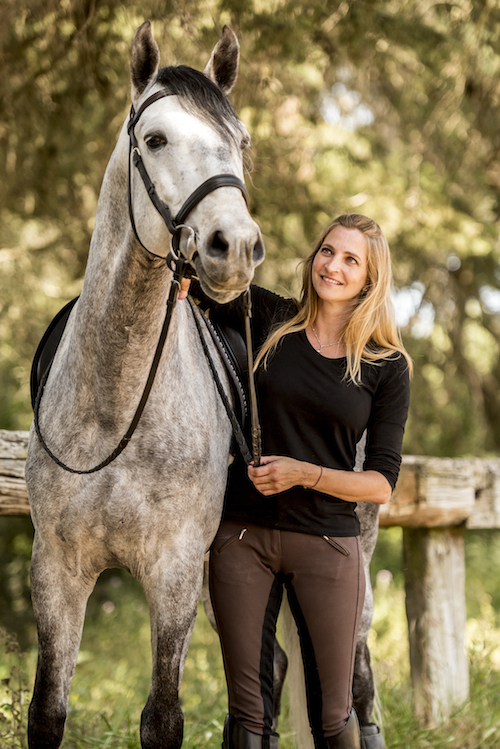
The online horse profile is a fantastic tool to keep up to date with your horse´s progress. It houses all the important information such as farrier reports, vet reports, current nutrition plans, training status, photographs and training video updates.
It can be so hard living in a different country to where your horse is in training, so this tool is extremely helpful to see how your horse is progressing.
It´s also very nice having all the information in one place rather than being sent updates via email and not having a good storage system. This way it is easier to follow your horse´s development by comparing previous with current status.
Testimonial from Charlotte Irps – Switzerland
APSL – when buying your Lusitano you need to ensure you have the correct paperwork such as blue book (passport) and Ownership transfer.
Key Pages
Supporting The Brooke Organisation
 Lusitano Horse Finder is proud to support The Brooke Organisation, an international animal welfare organisation dedicated to improving the lives of working horses, donkeys and mules in some of the world's poorest communities.
Lusitano Horse Finder is proud to support The Brooke Organisation, an international animal welfare organisation dedicated to improving the lives of working horses, donkeys and mules in some of the world's poorest communities.Get in Touch
Teresa Burton
Malveira, Portugal
Tel: + 351 913 175 772
E-mail: teresa@lusitanohorsefinder.com
